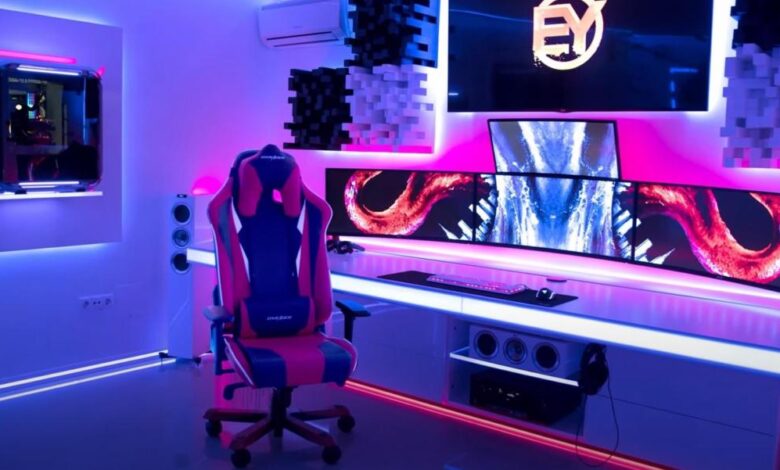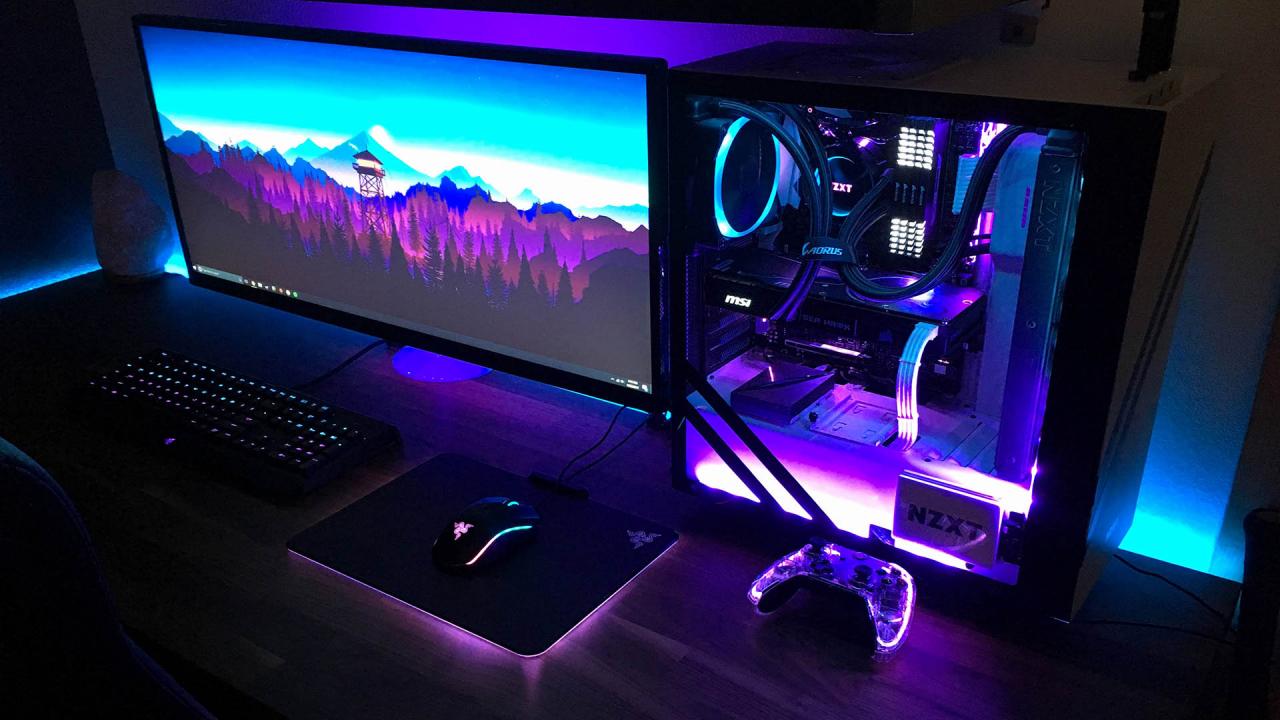The Next-Generation Engine Battlefield: Realism Reimagined

For years, the foundation of modern video games has been built upon a handful of powerful, proprietary software frameworks known as game engines.
These engines are the digital factories that handle everything—from physics and lighting to animation and sound—transforming lines of code into breathtaking, interactive worlds.
As we look into the future, the competition among these engines is intensifying, evolving from a simple feature race into a battle for development ecosystem dominance.
The next generation of the “Game Engine Wars” is less about polygon counts and more about automation, efficiency, scalability, and the seamless integration of Artificial Intelligence (AI).
The ultimate goal? To make the creation of photorealistic, dynamic, and massive virtual environments faster, cheaper, and more accessible than ever before.
This is the story of how the foundational tools of game development are being completely revolutionized, promising a future of digital worlds that truly feel alive.
I. The Titans and the Challengers: A Shifting Landscape

Historically, the engine market has been a two-horse race, but the battlefield is now crowded with specialized and open-source contenders, each vying for a piece of the billion-dollar game development pie.
A. The Established Giants (Unreal and Unity)
1. Unreal Engine (UE)
The established champion of visual fidelity. UE’s success is largely tied to its aggressive push toward cinematic realism, powered by its breakthrough technologies like Lumen (dynamic global illumination) and Nanite (virtualized geometry).
Unreal is dominating the AAA space and increasingly expanding into film production and architectural visualization, making it a key player in the nascent Metaverse development sector. Its focus is on making the impossible, highly realistic possible.
2. Unity Engine
The popular favorite among indie developers, mobile creators, and specialized applications (AR/VR, simulation). Unity’s strength lies in its modularity and broad platform support.
While historically lagging slightly behind in raw graphical power compared to Unreal, its recent emphasis on tools like the Data-Oriented Technology Stack (DOTS) and improved rendering pipelines are aiming to close that gap. Its focus is on accessibility and versatility.
B. The Rising Proprietary Engines
Many major publishers maintain their own internal engines, built specifically to optimize their core franchises.
1. RE Engine (Capcom)
Known for driving modern photorealistic horror games, highly optimized for performance and detailed character models.
2. Decima Engine (Guerrilla Games/Kojima Productions)
Famous for creating massive, beautifully detailed open worlds with exceptional lighting and weather effects.
3. Frostbite Engine (Electronic Arts)
A powerful engine used across various EA titles, though sometimes criticized for its complexity and difficulty in development.
C. The Open-Source and Niche Contenders (Godot, CryEngine)
The growth of powerful, yet free, open-source alternatives like Godot signals a wider decentralization of the market, offering tools with lower barriers to entry for hobbyists and small teams.
II. The Core Technological Battlefronts

The true engine war is being fought deep within the code, where developers are solving the most complex challenges of scale, performance, and realism.
A. Rendering Pipeline: Achieving Photorealism in Real Time
The biggest demand on any engine is generating visuals that are indistinguishable from reality, and doing so many times per second.
- Virtualized Geometry (Nanite): This technology allows developers to import massive, movie-quality assets with billions of polygons directly into the game world without performance loss. The engine dynamically streams and renders only the detail necessary for the current view, essentially eliminating the need for artists to manually create multiple “Level of Detail” (LOD) versions of every object. This single feature dramatically cuts down on development time and boosts visual fidelity.
- Dynamic Global Illumination (Lumen): Traditionally, lighting was “baked” (pre-calculated) into the environment. Lumen solves this by providing real-time global illumination, meaning light bounces, shadows, and reflections adjust instantly as the time of day changes, a door opens, or a flashlight moves. This is crucial for creating truly dynamic and believable environments.
- Neural Rendering: This emerging technique uses AI to predict and generate image details, effectively filling in the gaps faster and more efficiently than traditional rendering methods. Engines are starting to integrate this to speed up demanding processes like ray tracing or upscaling, blurring the line between rendering and machine learning.
B. Physics and Destruction: Creating Believable Worlds
A world must not only look real but behave real. Physics engines are evolving to handle far more complex and large-scale interactions.
- Chaos and Massively Scaled Physics: Engines are implementing more advanced particle and fluid dynamics systems that can simulate destruction on a massive scale—think entire buildings collapsing realistically, or thousands of debris fragments scattering dynamically. This requires extreme optimization to run on consumer hardware.
- Data-Oriented Design (DOD): Unity’s DOTS and similar efforts in other engines aim to structure code and data in a way that is highly efficient for modern multi-core processors. This allows the engine to calculate thousands of objects, collision events, and AI decisions simultaneously, leading to richer crowd simulations and more complex systemic gameplay.
C. Tools and Workflow: The Artist’s Empowerment
The battle for developer loyalty is often won by making the workflow easier, faster, and more intuitive.
- In-Engine Editing and Collaboration: Modern engines allow multiple artists, designers, and programmers to work in the same virtual environment simultaneously, much like collaborative cloud documents. This cuts down on version conflicts and drastically accelerates iteration speed.
- Visual Scripting: Tools like Unreal’s Blueprint allow designers and artists with little coding knowledge to build complex gameplay mechanics using visual node-based graphs. This democratizes game creation, shifting focus from complex programming syntax to pure design logic.
III. AI and the Generative Revolution
The true game-changer in the future engine war is the comprehensive integration of Generative AI. AI is evolving from being a tool for NPC pathfinding into the engine’s co-pilot and content creator.
A. AI-Assisted Content Generation (AACG)
The next-gen engine will be measured by its ability to automatically produce assets and environments, saving thousands of hours of human labor.
- Procedural Asset Generation: AI models are being trained on vast libraries of 3D assets, textures, and material data. An artist can provide a rough sketch or a text prompt (e.g., “a medieval ruined tower with overgrown moss”), and the engine’s AI can instantly generate a ready-to-use, fully optimized 3D model with appropriate textures and LODs.
- Automated Environment Seeding: AI can intelligently populate a massive, empty landscape. It understands concepts like “a dense pine forest near a rocky coastline” and automatically places trees, rocks, ground cover, and even small animal habitats in a natural, biologically plausible manner, ensuring the environment is coherent and believable.
- Quality Assurance (QA) and Optimization: AI can tirelessly play-test the game, finding bugs, identifying performance bottlenecks, and optimizing level geometry far faster than human testers. This greatly reduces the time between development stages.
B. AI-Driven Narrative and World Systems
Generative AI is making game worlds feel truly dynamic and unpredictable.
- Dynamic Narrative Generation: Leveraging Large Language Models (LLMs), future engines can allow developers to create narrative frameworks rather than rigid story scripts. The AI then fills in the blanks, generating unique side quests, dynamic NPC reactions, and personalized dialogue based on the player’s reputation and past actions.
- Adaptive NPC Behavior: The engine’s AI core manages NPCs that possess their own persistent goals, memories, and social relationships. They don’t just wait for the player; they actively pursue their own lives, leading to emergent events that make the world feel alive even in the absence of the player’s direct interaction.
IV. The Platform and Ecosystem Play
In the engine wars, technology is only half the battle; the other half is market penetration and control over the ecosystem.
A. The Metaverse Mandate
Both Unreal and Unity recognize that their future lies beyond traditional video games. They are repositioning themselves as the foundational tools for the Metaverse—the persistent, shared 3D internet. This means:
1. Industrial Application: Engines are being used for digital twins (simulating real-world factories or cities), architectural walkthroughs, and complex training simulations (e.g., medical or military).
2. Cross-Platform Fidelity: The engine must guarantee consistent visual quality and performance across every device—from high-end PCs and next-gen consoles to mobile phones, AR/VR headsets, and even web browsers (via WebGPU or similar technologies).
B. Cloud and Streaming Integration
As games move increasingly toward cloud streaming (like Xbox Cloud Gaming or NVIDIA GeForce NOW), the engine needs to be perfectly optimized for remote execution.
1. Offloaded Compute: The most demanding parts of the engine, such as complex physics, high-fidelity AI, or large-scale procedural generation, can be offloaded to cloud servers, allowing even low-power local devices to render stunning visuals.
2. Seamless Asset Streaming: Engines must efficiently stream massive asset files over the network, ensuring the player experiences instantaneous loading times, regardless of whether the game is running locally or remotely.
C. Licensing and Royalties
The financial model is a key differentiator. While Unreal’s model is based on a royalty cut after a certain revenue threshold, Unity’s licensing structure often targets the volume and type of installations or subscriptions. The engine that offers the most financially attractive and predictable model, especially for mid-tier studios, will gain significant market share.
V. Future Challenges and Ethical Hurdles
While the technological outlook is exciting, the engine developers face significant ethical and creative challenges as AI takes center stage.
A. The Homogenization Risk
If all studios rely heavily on the same AI models for asset and environment generation, there is a risk that future games will start to look and feel aesthetically similar, losing the unique artistic voice of individual developers. The true challenge is using AI to amplify uniqueness, not erase it.
B. IP and Copyright Complexity
When a Generative AI tool creates an asset after being trained on billions of existing images, textures, and models, the question of copyright and intellectual property becomes murky. Future engine licensing must provide clear legal protection and attribution mechanisms for creators who utilize AACG tools.
C. The Creative Barrier
The rise of powerful tools might ironically increase the expected level of quality. Players may come to expect photorealistic detail and massive, dynamic worlds as the new baseline, putting immense pressure on developers to utilize every complex feature offered by the engine.
D. Skill Gap Evolution
As engines become more automated, the necessary skill set for developers shifts from being masters of low-level optimization and complex coding to becoming expert curators and prompt engineers who guide the AI to realize their artistic vision. Engine providers must invest heavily in education and simplified user interfaces to bridge this growing skills gap.
Conclusion
The game engine of the future is no longer a static piece of software but a living, AI-driven development platform.
The battle between the titans like Unreal and Unity, alongside specialized and open-source contenders, will fundamentally determine the speed, cost, and creative scope of every game released in the next decade.
In the pursuit of ultimate realism and scale, the key innovation is moving beyond mere rendering techniques into generative automation.
The engine is transforming into a self-managing entity that can: build the world, populate it with dynamic intelligence, optimize the performance, and even help write the story.
This shift is critical because traditional game development simply cannot scale fast enough to meet the demand for truly massive, dynamic, and persistent virtual environments—the very environments that underpin the Metaverse and the next generation of AAA titles.
The victor in the future Game Engine Wars will be the one that most successfully integrates powerful, ethically sound, and user-friendly Generative AI tools into its core pipeline. It must provide the highest visual fidelity (thanks to technologies like Nanite and Lumen), while also offering the best efficiency and ease-of-use (through collaboration and visual scripting).
The engine that can democratize the creation of cinematic, billion-polygon worlds—making them accessible not just to huge AAA teams, but to small indie studios and even hobbyists—will ultimately capture the lion’s share of the market.
The result of this engine competition will not just be better video games; it will be the birth of entirely new digital realities, built on foundations of code that are constantly learning, adapting, and creating. It’s a thrilling, demanding, and creatively unbounded future, all powered by the foundational software we call the game engine.